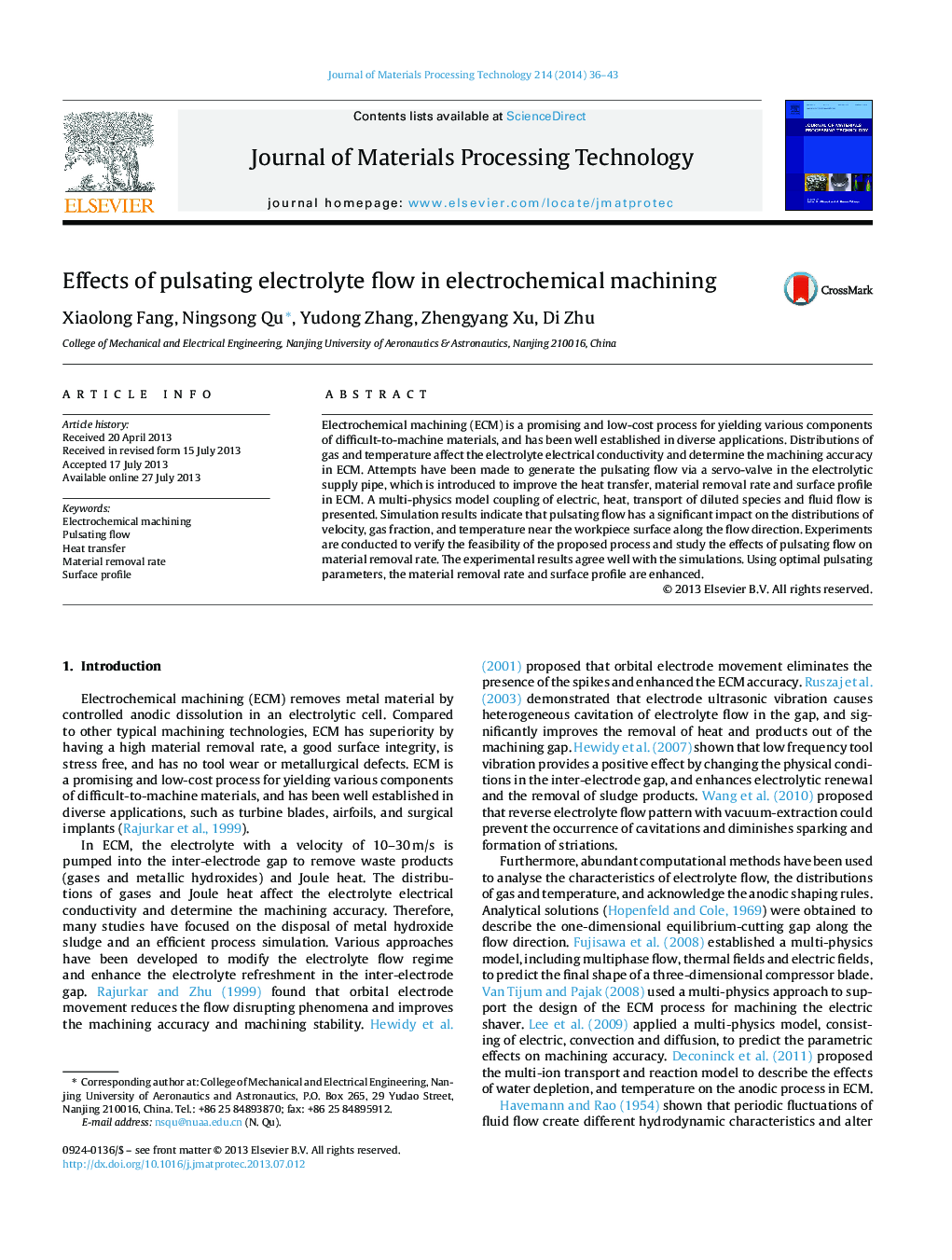| Article ID | Journal | Published Year | Pages | File Type |
|---|---|---|---|---|
| 794703 | Journal of Materials Processing Technology | 2014 | 8 Pages |
•Pulsating electrolyte flow, generated via a servo-valve in the electrolytic supply pipe, is introduced to improve the heat transfer and material removal rate in ECM.•A multi-physics model coupling of electric, heat, transport of diluted species and pulsating flow is established.•Both the simulations and experiments indicate that pulsating flow has a significant impact on ECM.
Electrochemical machining (ECM) is a promising and low-cost process for yielding various components of difficult-to-machine materials, and has been well established in diverse applications. Distributions of gas and temperature affect the electrolyte electrical conductivity and determine the machining accuracy in ECM. Attempts have been made to generate the pulsating flow via a servo-valve in the electrolytic supply pipe, which is introduced to improve the heat transfer, material removal rate and surface profile in ECM. A multi-physics model coupling of electric, heat, transport of diluted species and fluid flow is presented. Simulation results indicate that pulsating flow has a significant impact on the distributions of velocity, gas fraction, and temperature near the workpiece surface along the flow direction. Experiments are conducted to verify the feasibility of the proposed process and study the effects of pulsating flow on material removal rate. The experimental results agree well with the simulations. Using optimal pulsating parameters, the material removal rate and surface profile are enhanced.
